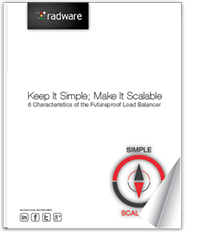DevOps Brings the Cloud to Application Development
Applications need to change quickly and easily in today’s fast-paced world of the internet. DevOps is bringing applications the ability to morph and evolve the same capabilities that the cloud has delivered to IT infrastructures. Applications require constant adjustments and fine tuning to meet consumer and market requirements. DevOps offers application development a flexible process model that delivers the agility and elasticity benefits found in cloud architectures.

Cloud for the programmers
Cloud technologies blossomed because they provided the agility and elasticity that businesses needed to ensure that their applications were delivered reliably and efficiently. The effective delivery of applications, internally and externally, is essential to almost all businesses in today’s market environment.
To review, agility is the ability for application delivery architectures to add and remove services quickly and easily. The addition or removal of an application or component of an application cannot take weeks or months. Elasticity is the ability for the IT infrastructure to scale resources to meet demand. When client demand increases, or decreases, the application delivery infrastructure needs to be able to accommodate the necessary changes to the available resources to meet the demand without disrupting the service.
Eddies instead of waterfalls
DevOps brings major changes to the way applications are developed and updated. In general, DevOps changes application development from a waterfall model to an agile and continuous delivery model.
The traditional waterfall development model uses specific task blocks and only allows the application development to progress when one task is done and handed to the next block. The typical waterfall model has these application development blocks – Plan->Design->Build->Test->Deploy. The plan and design does not change until the application is fully deployed. Only after deployment, does the cycle start again from the beginning.
[You might also like: DevOps is Changing IT Organizations]
Agile and continuous development models change this by making the Design->Build->Test->Deploy portions of the development cycle to be more interactive with an active feedback loop that allows for quick modifications and adjustments. DevOps brings these development models together with a more unified IT organization that is no longer compartmentalized within the traditional waterfall blocks.
Application developers, testers, network architecture, and operational support tasks merge and become the responsibility of the broader team towards the common goal of reliable and efficient application delivery in a constantly changing environment.
Flexibility through micro-changes
This goal is exactly what cloud architectures enable IT infrastructures to offer to businesses for application delivery. Cloud architectures create a flexible framework that is able to quickly alter its capabilities to ensure that applications are always available within their business-defined SLAs.
DevOps is the cloud-like change to the application development cycles and organizations. This enables businesses to modify and adapt their applications quickly and reliably to meet the changing business conditions.
The application delivery technologies in the IT architecture must offer the flexibility and programmability that the DevOps models require for efficient and quick development cycles. Automation and integration of standard APIs for the application delivery infrastructure is one of the essential components that enable DevOps to deliver the same benefits to the application development process that cloud provides the application delivery infrastructure.




